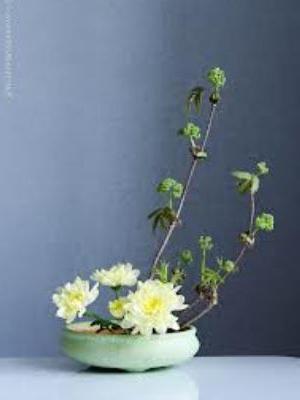Vertical Succulent Planter in bathroom. For a bare wall, such a planter becomes much like a living piece of art. Easy to grow plants include dudleyas and sedums. They grow very easily from cuttings. Once established, these plants require little water. Torrent Ableton Live Packs Downloads on this page.
Ikebana flower arrangement in a (alcove), in front of a (hanging scroll) Ikebana (, 'living flowers') is the of. It is also known as kadō ( 華 道, the 'way of flowers'). The tradition dates back to the 7th century when floral offerings were made at altars. Later, they were placed in the (alcove) of a home. Ikebana reached its first zenith in the 16th century under the influence of Buddhist teamasters and has grown over the centuries, with over 1,000 different schools in Japan and abroad. Kadō is counted as one of the three classical Japanese arts of refinement, along with for incense appreciation and for tea and the tea ceremony. Illustration from the Kaō irai no Kadensho, believed to be the oldest extant manuscript of ikebana teaching, dating from a time shortly after that of Ikenobō Senkei.

It shows various arranging styles of tatebana ( ogibana) wide-mouth (right) and upright styles. Plants play an important role in the native religion. Are objects that divine spirits are summoned to. Evergreen plants such as are a traditional decoration of the placed in pairs in front of homes to welcome ancestral spirits or of the harvest. The pastime of viewing plants and appreciating flowers throughout the four seasons was established in Japan early on through the aristocracy. Poetry anthologies such as the and from the (794–1185) included many poems on the topic of flowers. During this time, Buddhism was introduced to Japan starting in the 6th century through China and Korea.
500 million+ members Manage your professional identity. Build and engage with your professional network. Emma Marrone Cd Schiena Download Skype. Access knowledge, insights and opportunities. All the latest Sports News, Scores, Fantasy Games.

Offering flowers at Buddhist altars became common. Although the lotus is widely used in India where Buddhism originated, in Japan other native flowers for each season were selected for this purpose. While in China the Buddhist priests were the first instructors of flower arrangement, in Japan they only introduced its crudest elements. For a long time the art had no meaning and was merely the placing in vases, without system, of the flowers to be used as temple offerings and before ancestral shrines. The first flower arrangements worked out with a system were known as shin-no-hana, meaning 'central flower arrangement'. A huge branch of pine or cryptomeria stood in the middle, and around the tree were placed three or five seasonable flowers.
These branches and stems were put in vases in upright positions without attempt at artificial curves. Generally symmetrical in form, the arrangements appeared in Japanese religious pictures of the 14th century. It was the first attempt to represent natural scenery. The large tree in the center represented distant scenery, plum or cherry blossoms middle distance, and little flowering plants the foreground. The lines of these arrangements were known as centre and sub-centre. Later on, among other types of Buddhist offering, placing became popular in the (1185–1333) and (1336–1392).
Various Buddhist scriptures have been named after flowers such as the Kegon-kyo () and Hokke-kyo (). The (Scroll of Frolicking Animals and Humans) depicts lotus being offered by a monk(ey) in front of a frog mimicking the Buddha. With the development of the architectural style starting in the (1336–1573), (scroll pictures) and containers could be suitable displayed as art objects in the oshiita, a precursor to the alcove, and the chigaidana, two-leveled shelves. Also displayed in these spaces were flower arrangements in vases that influenced the interior decorations, which became simpler and more exquisite. This style of decoration was called zashiki kazari (座敷飾). The set of three ceremonial objects at the Buddhist altar called mitsugusoku consisted of candles lit in holders, a censer, and flowers in a vase. The flowers in the vase were arranged in the earliest style called tatebana or tatehana (立花, 'standing flowers'), and were composed of shin (motoki) and shitakusa.
Latest Posts
- ✔ Captureperfect 3.0 Download Full Version
- ✔ Spytech Spyagent 8.5 Crack
- ✔ Download The Beast 1975 Sirpa Lane
- ✔ Gef Downloads
- ✔ Mementodiscpatcher0 9e Exe
- ✔ Darna Zaroori Hai Movie Free Download In Hd
- ✔ Rust Cracked Servers 2016
- ✔ Megaman X3 Rom Hack Download
- ✔ Corsa Comfort 2002 Owners Manual
- ✔ Century 21 Accounting 7th Edition Chapter 13 Test A Push
- ✔ Ediabas Inpa Software Installieren Date
- ✔ Dod Infosec Web Site
- ✔ Event Program Templates Indesign Download